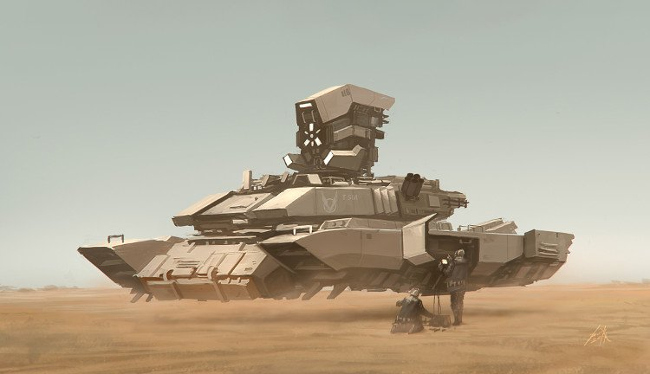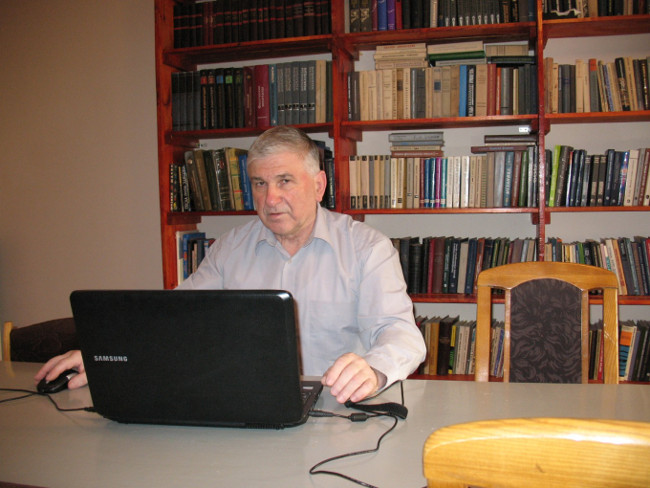Russia successfully built a quantum engine, speed of 1,000 km / sec
Russian experts have successfully tested a quantum engine, also known as an anti-gravitational engine, which has a speed of 1,000 km / s, which is 5,000 times stronger than a conventional rocket engine. This achievement brought Russia into the leading position in the field of basic science of the world.
This successful Russian test will create a scientific and technical revolution in the 21st century. This engine has the effect of neutralizing the gravity of objects such as tanks, aircraft, warships . and opens up the ability to make transport vehicles thousands of times faster than today.
This technical achievement is the result of using a modern basic scientific theory, called hyperlinking theory, built by Russian scientists.

Tanks fitted with quantum engines.
Dr. Vladimir Leonov, who won the National Prize of the Russian Government, who pioneered the field of research on hyperlinked theory, said moving quantum motors are horizontal or take off vertically. thanks to internal force, not the actuator to drive the wheel, there is no need for parts like bearings.
In 2009, Russian scientists successfully tested quantum engines. By 2014, the Russians have successfully tested a 54kg engine that only consumes electric energy equal to 1kw but creates a vertical thrust with impulse with an intensity of 500-700kg force. Since then, they have successfully built flying weapons with acceleration 10-12 times the gravitational acceleration, which is 10-12 times the rate of free fall of objects on the surface of the Earth.
Speed 1000km / sec!
Dr. Vladimir Leonov said that conventional rocket engines have now reached the limited capacity of technology. In 50 development, rocket engine impulse can only increase from 220 seconds (German Faw-2 rocket in World War 2) to 450 seconds (in Russian Proton rocket engine). But the quantum engine impulse has reached tens of millions of seconds, helping to increase the efficiency of quantum engines by 900% compared to the performance of conventional rocket engines.

Dr. Vladimir Leonov.
Specifically, conventional rocket engines weighing 100 tons only carry a useful load of about 5 tons (5% efficiency), while a 100-ton quantum engine can carry 90 tons of cargo.
In terms of speed, while the speed of conventional missiles only reaches a maximum of 18km / sec, the quantum engine can send the airship moving at 1000 km / sec. At this rate, the quantum engine helps the flight to shorten the time from Earth to Mars to 42 hours and to the Moon to be 3.6 hours.
Unlike conventional engines that use chemical energy, quantum motors use the energy generated from cold fusion reactions with an efficiency of 1,000,000 times more.
Cold fusion reaction was successfully tested by Andrea Rossi, an Italian engineer, after which Russian scientists also mastered this technology. In cold fusion reaction, 1 kg of nickel material used can produce energy equivalent to 1,000,000 kg of gasoline.
In the near future, flying airplanes fitted with quantum engines can move in all environments: air, space, sea, sea and ground.
The time the aircraft is powered by an engine powered by the amount of controlled cold fusion synthesis used in quantum engines flying from Moscow to New York will shorten from the current 10 hours to an hour.
With quantum engines, the Russians once again took the lead in the outlaw, exploring the universe, opening a new era of interstellar travel.
- Crazy idea: Create an atmosphere for Mars
- Official: We have a new physical state: time crystal
- Amazing engine in the world, 9 times stronger than the Titanic engine
You should read it
- Search engines may not know you yet
- Surprise with a paper engine that still works well
- How terrible is the rocket that will bring people to Mars?
- The best search engine 2018
- China invented something that could replace jet engines
- 5 best search tools for academic research
- Protect yourself against search engines!
- Sliding cars with Soviet aircraft engines - like fiction that turned out to be real
May be interested
- Is Firefox Quantum faster than Chrome? This is a detailed test result!
 after days of waiting, quantum finally made its debut, and now it's time to check if firefox quantum is faster than chrome.
after days of waiting, quantum finally made its debut, and now it's time to check if firefox quantum is faster than chrome. - The first time to successfully transfer data
 instant teleportation has taken a big step closer to reality. researchers from the delft university of technology (netherlands) have been successful for the first time accurately shifting quantum information at a distance of 3 m, and no information has been misleading to other dimensions.
instant teleportation has taken a big step closer to reality. researchers from the delft university of technology (netherlands) have been successful for the first time accurately shifting quantum information at a distance of 3 m, and no information has been misleading to other dimensions. - Quantum computing - a marathon, not a sprint contest!
 if you are interested in the technology world, often 'wandering' on many major international technology forums, you've probably met the phrase next big thing - referring to quantum computing technology (quantum computing ).
if you are interested in the technology world, often 'wandering' on many major international technology forums, you've probably met the phrase next big thing - referring to quantum computing technology (quantum computing ). - Experience the Yandex Browser of Russia
 russia's yandex browser has a nice interface, fast browsing speed and using blink engine like chrome and opera.
russia's yandex browser has a nice interface, fast browsing speed and using blink engine like chrome and opera. - Launch of the world's first hybrid chip that combines electronics, photonics and quantum technology
 in a major breakthrough for quantum technology, scientists from boston university, uc berkeley and northwestern university (usa) have successfully developed the first chip that simultaneously integrates three components: electronics, photonics and quantum.
in a major breakthrough for quantum technology, scientists from boston university, uc berkeley and northwestern university (usa) have successfully developed the first chip that simultaneously integrates three components: electronics, photonics and quantum. - The fastest supercar in the world with a speed of 1,600 km / h to test the engine successfully
 the bloodhound supersonic car (ssc), the fastest car in the world today, has a successful engine test, ready to set a world record at 1,600 km / h, faster than the speed of sound at the end of the month. 10 this.
the bloodhound supersonic car (ssc), the fastest car in the world today, has a successful engine test, ready to set a world record at 1,600 km / h, faster than the speed of sound at the end of the month. 10 this. - What is quantum computing and how did people develop this technology?
 quantum computers promise to create a revolution in the digital world. however, how will humans harness energy from quantum mechanics?
quantum computers promise to create a revolution in the digital world. however, how will humans harness energy from quantum mechanics? - New chip technology can enhance quantum computing
 an international research group, including chinese researchers, has demonstrated a large-scale integrated quantum optical circuit, which could pave the way for the production of giant components for a quantum computer. optics.
an international research group, including chinese researchers, has demonstrated a large-scale integrated quantum optical circuit, which could pave the way for the production of giant components for a quantum computer. optics. - The human army and the speed-line repair machines are only in 48 hours in Russia
 the army of people and machines worked together day and night to repair a main street in the capital moscow, russia within 48 hours surprised and admired.
the army of people and machines worked together day and night to repair a main street in the capital moscow, russia within 48 hours surprised and admired. - Successfully fabricated new conductive 2D materials at the speed of light
 new 2d materials that conduct electricity at the speed of light are the latest scientifically engineered products that can be applied to future supercomputers and quantum computers.
new 2d materials that conduct electricity at the speed of light are the latest scientifically engineered products that can be applied to future supercomputers and quantum computers.










 The AI system can predict a stroke risk more accurately than a doctor
The AI system can predict a stroke risk more accurately than a doctor